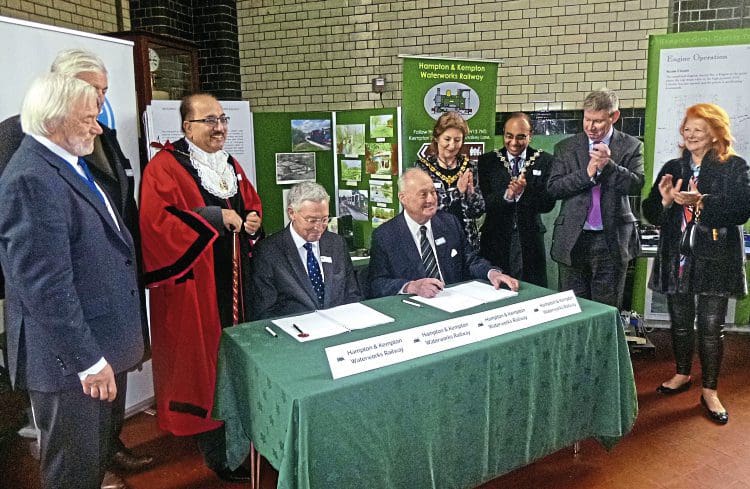By Geoff Courtney
Fifteen years ago, a group of railway enthusiasts founded a society that had a single aim – to restore a short industrial line in west London that during its life of just 30 years operated under the radar of almost everybody except the most ardent enthusiasts.
It was 2ft gauge, ran for 3½ miles, and was built to transport coal from a wharf on the Thames at Hampton to two waterworks at Hampton and Kempton Park.
Enjoy more Heritage Railway reading in the four-weekly magazine.
Click here to subscribe & save.
Previous to its opening in 1916, the coal had been delivered to the two sites by horse and cart, a monumental task considering the pumping engines at the works had voracious appetites that demanded 760 tons of coal a week to keep the water flowing.

Three attractive and identical 0-4-2Ts were ordered from Kerr Stuart by the line’s operator, the Metropolitan Water Board, and this trio – named Hampton, Kempton and Sunbury – headed the trains throughout the three decades of the railway’s existence.
By 1946 the demand for coal had receded due to modernisation at the works, and so the line was closed and, with steam locomotive preservation being the last thing on people’s minds as they recovered from a world war, its three engines were cut up. The line had served its purpose, and looked set to become just another forgotten railway.
Except it wasn’t. The two waterworks continued to operate and do so today, albeit not in the original buildings, and the trackbed remained in the ownership of the MWB and is now, following privatisation, owned by Thames Water.
Read more in Issue 240 of HR – on sale now!
Advert
 Enjoy more Heritage Railway reading in the four-weekly magazine. Click here to subscribe.
Enjoy more Heritage Railway reading in the four-weekly magazine. Click here to subscribe.




